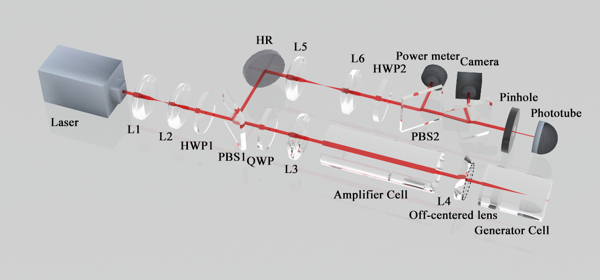A high-repetition rate single-longitudinal-mode laser with sub-nanosecond pulse width and high pulse energy is promising for applications in the fields of fast ignition lasing radiation, space debris detection, LIDAR Thomson scattering diagnosis, etc. Stimulated Brillouin scattering (SBS) is a simple and efficient pulse compression technology that can compress long nanosecond pulses with high energy to sub-nanosecond pulses. In SBS pulse compression, the liquid medium used for Brillouin scattering has the advantages of low pressure, a small absorption coefficient, and a high laser damage threshold compared with gas and solid media, and is most suitable for SBS with high injection energies and long interaction distances. Therefore, SBS pulse compression based on the liquid medium is the most promising technical method for obtaining a high-energy sub-nanosecond laser with a kilohertz-level repetition rate. However, most of the work in this field has focused on SBS pulse compression characteristics for xenon lamp pumped lasers, whose laser repetition rates are generally low (below tens of hertz). Few studies have focused on high-repetition rate SBS pulse compression based on a liquid medium. Therefore, one goal of researchers is to maximize the operating repetition rate of SBS pulse compression based on the liquid medium with a stable output.
In the case of the liquid medium, the thermal effects and optical breakdown are considered as the main issues limiting SBS pulse compression under high-repetition rate operation and high-pump power application. The laser absorbed by the medium is converted into heat, causing serious thermal deposition within the medium, an uneven spatial distribution of the medium temperature, significant thermal convection, changes in the medium density gradient, laser-beam deflection, and other phenomena. These phenomena interact with each other, exhibiting strong coupling characteristics, and cause severe beam distortion, affecting the quality of the compressed beam. Researchers have developed methods for alleviating thermal effects. The effective thermal mitigation methods in the literature can be divided into two categories. The first is the liquid purification method to remove large impurity particles in the liquid medium, which can appropriately reduce the total heat absorption generated by the laser absorption within the medium and reduce the optical-breakdown probability. The second category is the method involving flowing liquid or a wedge-based moving focal spot, which are used to alleviate the local focusing heat accumulation.
In the work published in High Power Laser Science and Engineering, Vol. 10, Issue 4 (Hongli Wang, Seongwoo Cha, Hong Jin Kong, Yulei Wang, Zhiwei Lv. Output characteristics of high-power stimulated Brillouin scattering pulse compression enhanced by thermal effects based on HT270[J]. High Power Laser Science and Engineering, 2022, 10(4): e24), the authors presented the enhancement phenomenon of output characteristics of high-power stimulated Brillouin scattering pulse compression by exploiting thermal effects based on the liquid medium, and 2-kHz high-power SBS pulse compression was achieved with HT270.
The SBS output with the medium purification and rotating off-centered lens methods in this work were studied at different repetition rates, which indicated that these two methods can alleviate thermal effects and improve the SBS energy efficiency. Thermal effects are typically considered as obstacles to high-repetition rate stimulated Brillouin scattering pulse compression. However, a novel method was presented for improving the SBS output characteristics by exploiting thermal effects based on the liquid medium. Moreover, the thermal issues in the generator-amplifier double-cell structure were theoretically analyzed, including the negative and positive effects of thermal effects on the SBS process in liquid media. The HT270 liquid medium with a large kinematic viscosity and a high boiling point was selected to improve the non-uniformity of beam profiles and avoid the jiggling effect of beam patterns caused by thermal problems for the high-power SBS pulse compression experiment in the present study. For a 35-mJ pump energy, the energy efficiency at 2 kHz without the rotating method is 30% higher than that at 100 Hz and 70% higher than that at 500 Hz. The enhancement of the SBS output characteristics by thermal effects was demonstrated theoretically and experimentally, and a sub-nanosecond pulse laser output with a 2 kHz repetition rate was achieved using HT270.

Schematic of the experimental setup for SBS pulse compression
This work provides design guidance for high-power SBS pulse compression techniques. Future work will focus on further optimizations of output characteristics of SBS pulse compression for higher-repetition rate operation. The medium parameters can be changed to optimize the reflected energy efficiency by "active" thermal enhancement of SBS pulse compression. Furthermore, the temperature-dependent parameters of the viscosity coefficient, refractive index, and density need to be considered for a more complete physical model in the future.


